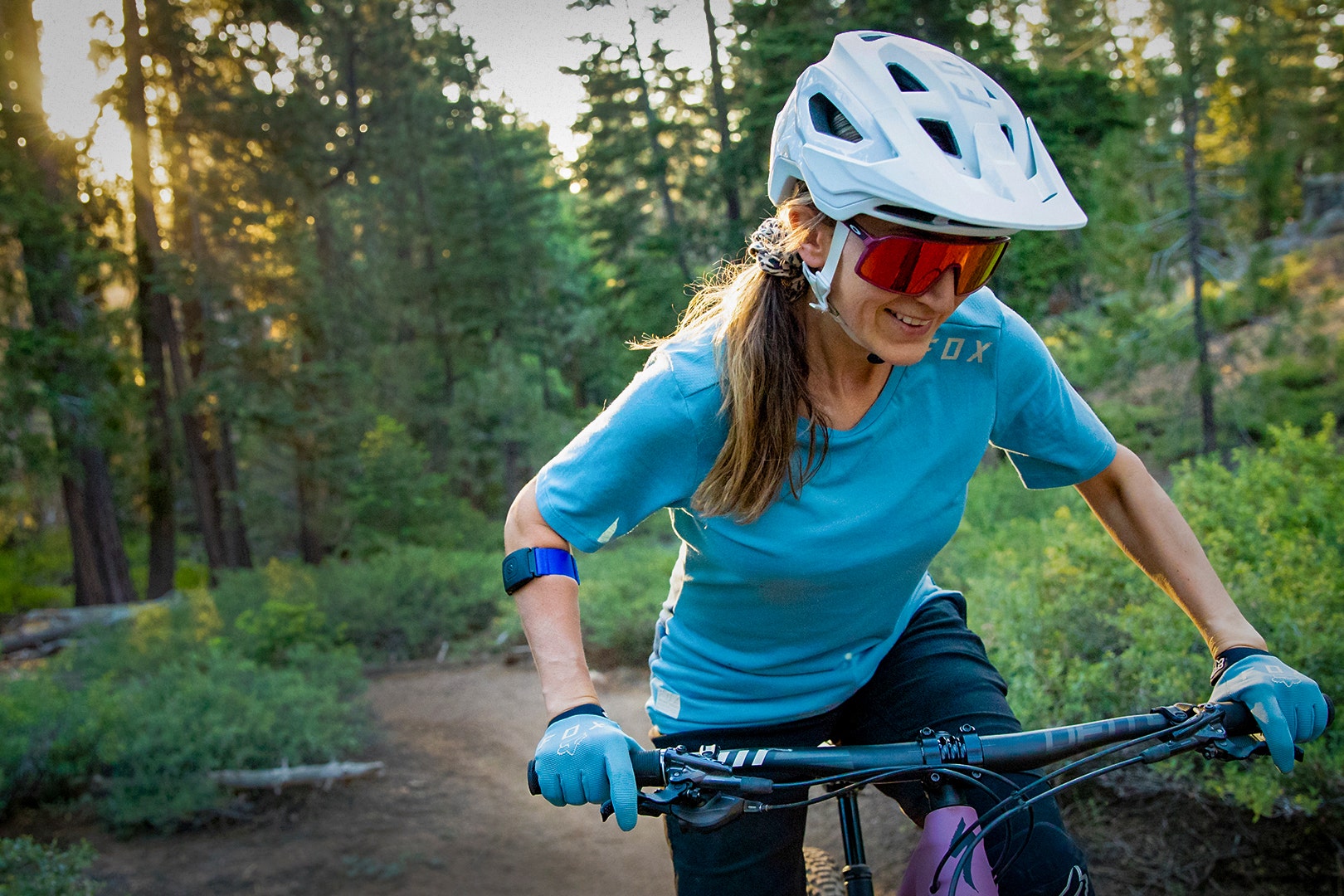Top Heart Rate Monitor for Cycling Enthusiasts

Heart rate monitoring is a crucial aspect of cycling performance. Tracking your heart rate can help you understand the intensity of your workout, monitor your fitness level, and optimize your training to achieve your goals.
In this article, we will explore the importance of heart rate monitoring in cycling, discuss the key features to look for in a heart rate monitor, review the best heart rate monitors for cycling, and provide tips on using a heart rate monitor effectively during your cycling sessions.
Understanding the Importance of Heart Rate Monitoring in Cycling
Heart rate monitoring is a crucial aspect of cycling that can greatly enhance your training and overall performance. By keeping track of your heart rate during your rides, you gain valuable insights into the intensity of your workout and ensure that you are pushing yourself to achieve your desired training effect.
When you cycle, your heart works harder to pump oxygenated blood to your muscles, providing them with the energy they need to keep pedaling. By monitoring your heart rate, you can determine how hard your body is working and adjust your effort accordingly. This allows you to optimize your training sessions and make the most out of your time on the bike.
The Connection Between Heart Rate and Cycling Performance
The relationship between heart rate and cycling performance is a fascinating one. As you increase your cycling intensity, your heart rate naturally rises to meet the demands of your muscles. By monitoring your heart rate, you can gauge the intensity of your workout and ensure that you are challenging yourself enough to see improvements in your stamina, endurance, and overall performance.
For example, if you're aiming to increase your stamina, you can use heart rate monitoring to determine the heart rate range that corresponds to your desired training effect. By consistently training within this range, you can gradually increase your cardiovascular fitness and improve your ability to sustain higher intensities for longer periods.
On the other hand, if you're looking to improve your endurance, heart rate monitoring can help you identify your anaerobic threshold. This is the point at which your body starts relying more on anaerobic metabolism, leading to fatigue. By training just below this threshold and gradually pushing it higher, you can improve your endurance and delay the onset of fatigue during long rides.
Health Benefits of Heart Rate Monitoring
Heart rate monitoring not only enhances your cycling performance but also offers numerous health benefits. By maintaining your heart rate within the desired target zone, you can optimize your cardiovascular fitness and improve your overall heart health.
Regular cardiovascular exercise, such as cycling, has been shown to lower the risk of heart disease and improve overall cardiovascular function. By monitoring your heart rate, you can ensure that you are engaging in exercise that is beneficial for your heart and maintaining a healthy heart rate range.
In addition to cardiovascular benefits, heart rate monitoring can also help you effectively manage your weight. By exercising within your target heart rate zone, you can maximize calorie burn and promote weight loss or weight maintenance.
Moreover, tracking your heart rate can provide valuable insights into your overall well-being. Sudden changes or abnormalities in your heart rate during exercise may indicate underlying health issues that require attention. By regularly monitoring your heart rate, you can detect any potential problems early on and seek appropriate medical advice.
In conclusion, heart rate monitoring is a vital tool for cyclists of all levels. By understanding the connection between heart rate and cycling performance, as well as the health benefits it offers, you can make informed decisions about your training and ensure that you are getting the most out of your rides. So, next time you hop on your bike, don't forget to strap on that heart rate monitor and let it guide you toward improved performance and better health!
Key Features to Look for in a Heart Rate Monitor
Accuracy and Consistency
The accuracy and consistency of heart rate monitoring are crucial factors when selecting a heart rate monitor. Look for devices that use advanced sensor technology to provide accurate readings, even during high-intensity workouts. This ensures that you can rely on the data to track your progress and make informed decisions about your training.
When it comes to accuracy, it's not just about getting the right number, but also about how consistent the readings are. A heart rate monitor that fluctuates or drops out during your cycling sessions can be frustrating and may lead to inaccurate data. Therefore, it's important to choose a device that maintains a consistent connection with your body, providing reliable and continuous heart rate measurements.
Comfort and Fit
A heart rate monitor should not only be accurate but also comfortable to wear. After all, you'll be relying on it for extended periods during your cycling sessions. Consider factors such as strap materials, adjustability, and overall comfort when choosing a device.
An ill-fitting heart rate monitor can cause discomfort and affect the accuracy of the readings. It's essential to find a monitor that fits securely on your wrist or chest without causing any irritation or distractions. Some heart rate monitors come with adjustable straps, allowing you to customize the fit to your preference.
Moreover, the material of the strap can also contribute to the overall comfort. Look for monitors with soft and breathable materials that won't cause sweating or chafing, especially during long rides.


Battery Life and Connectivity
Long battery life is essential for extended cycling sessions or multi-day rides. The last thing you want is for your heart rate monitor to die halfway through your workout, leaving you without crucial data. When choosing a heart rate monitor, consider the battery life and ensure that it lasts throughout your workouts.
Additionally, connectivity is another important aspect to consider. Many heart rate monitors can sync with your cycling computer, smartphone, or other fitness devices, allowing you to seamlessly transfer and analyze your heart rate data. This connectivity can enhance your training experience by providing detailed insights and helping you track your progress over time.
Make sure to check the compatibility of the heart rate monitor with your existing devices to ensure a smooth integration. Some monitors may require specific apps or software to access the data, so it's worth considering the user interface and ease of use as well.
The Best Heart Rate Monitors for Cycling
When it comes to cycling, monitoring your heart rate is crucial for optimizing your performance and tracking your fitness progress. With a wide range of options available in the market, it can be overwhelming to choose the right heart rate monitor for your cycling needs.
Choosing the right one depends on your specific needs and budget. Whether you opt for a high-end model with advanced features or a budget-friendly option that provides the essential functionality, monitoring your heart rate during your cycling sessions will undoubtedly enhance your training and help you achieve your fitness goals.
How to Use a Heart Rate Monitor Effectively While Cycling
Setting Up Your Heart Rate Monitor
Before your cycling session, ensure that your heart rate monitor is properly set up and synced with your cycling computer or smartphone. Adjust the strap or wristband to achieve a snug yet comfortable fit. Familiarize yourself with the device's buttons and functions to easily navigate through the different features.
Interpreting Heart Rate Data
Understanding the data provided by your heart rate monitor is key to optimizing your cycling performance. Different heart rate zones indicate varying workout intensities. Learn the target heart rate zones for your specific training goals and use them to guide your workouts. Regularly analyze your heart rate data to track your progress and make any necessary adjustments to your training regimen.
Incorporating Heart Rate Monitoring into Your Cycling Routine
Make heart rate monitoring an integral part of your cycling routine. Use the insights gained from tracking your heart rate to structure your training sessions, monitor your recovery, and ensure you're pushing yourself without overexerting. Over time, you'll develop a deeper understanding of your body's response to different training stimuli and be able to fine-tune your workouts accordingly.
Conclusion
In conclusion, a reliable heart rate monitor is a must-have accessory for cycling enthusiasts looking to optimize their performance and achieve their fitness goals. With the right heart rate monitor, you can effectively track your heart rate, monitor your progress, and make data-driven decisions to enhance your cycling experience. Remember to consider key features such as accuracy, comfort, and connectivity when selecting a heart rate monitor, and use the data obtained to tailor your training to suit your specific needs. Happy cycling!